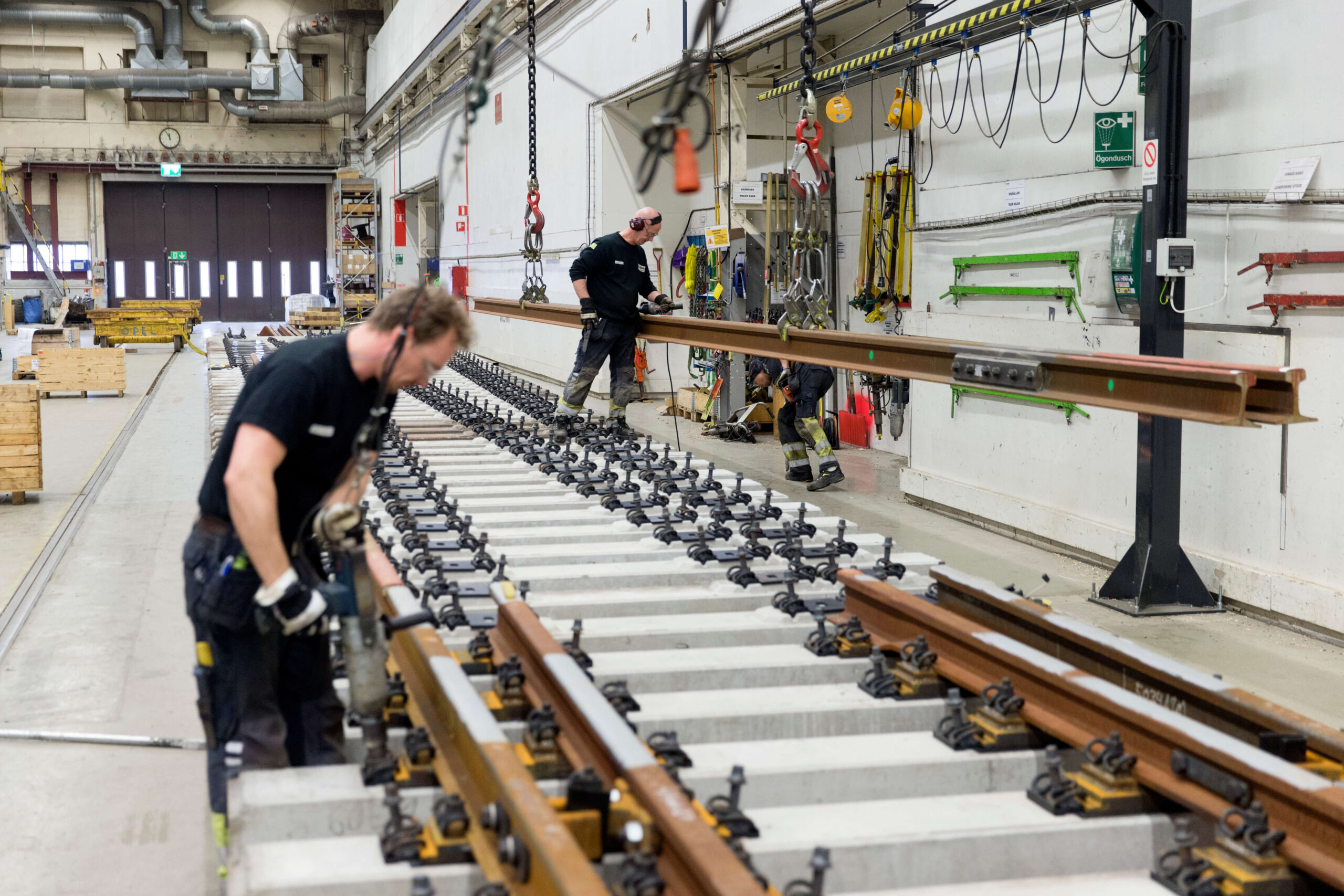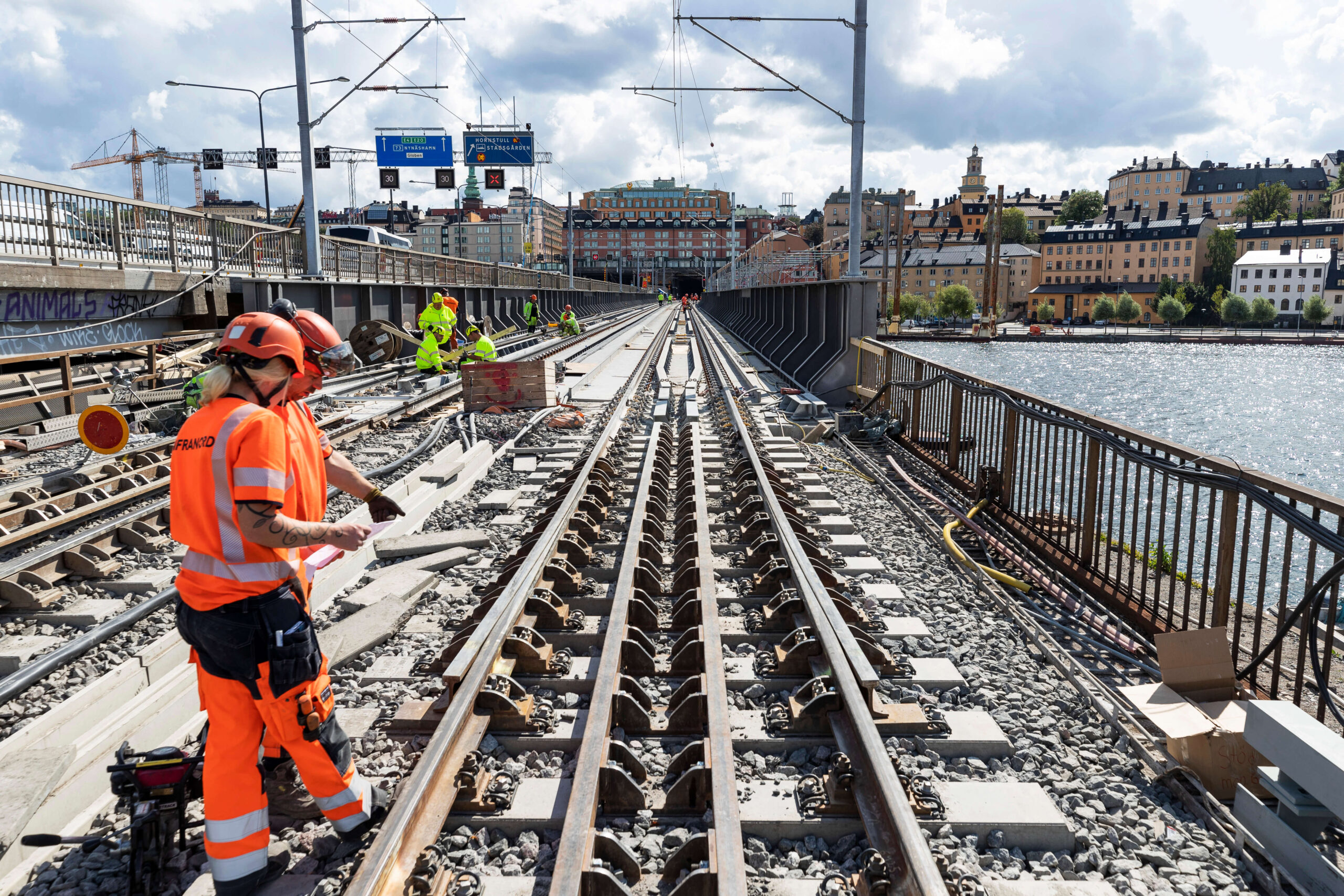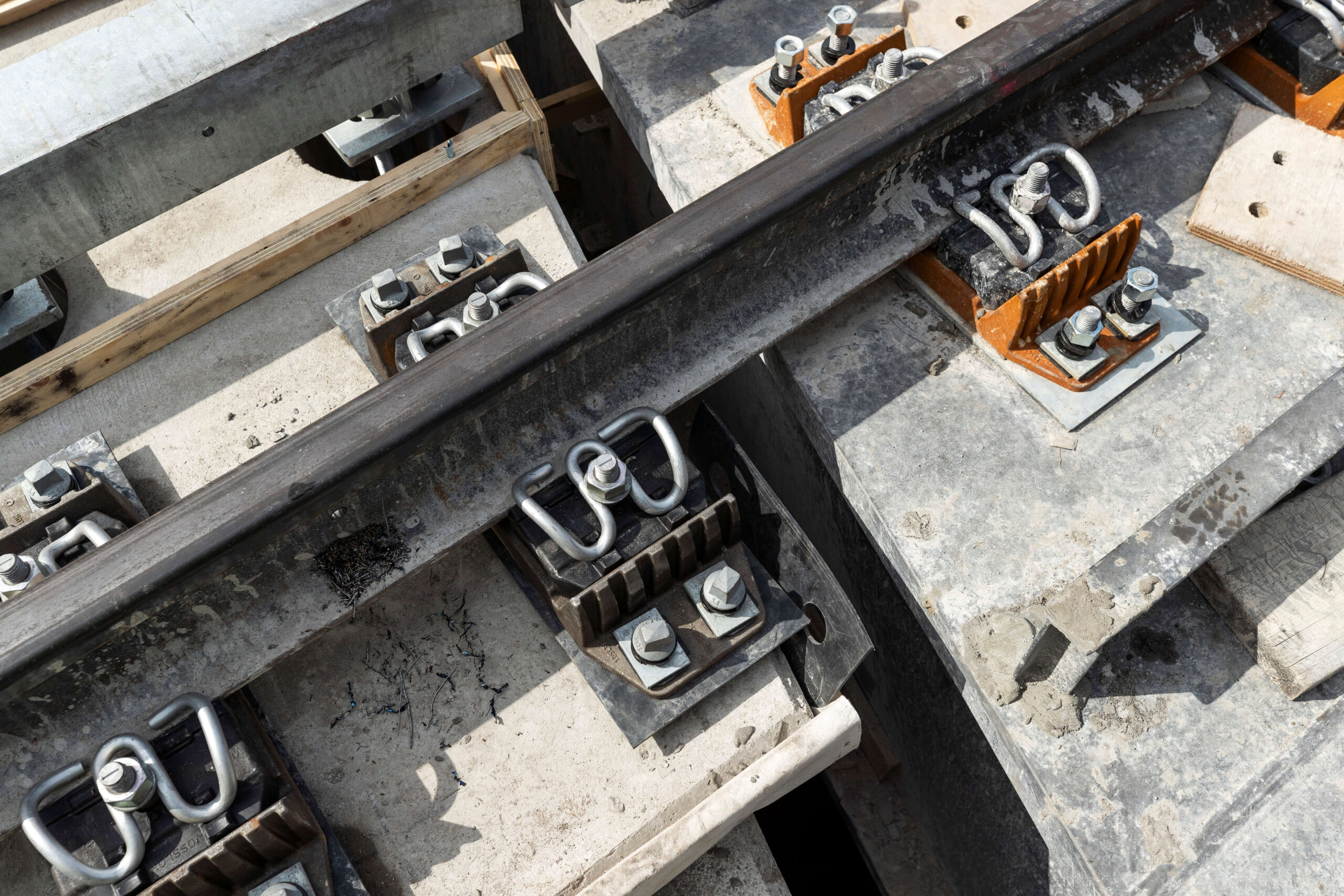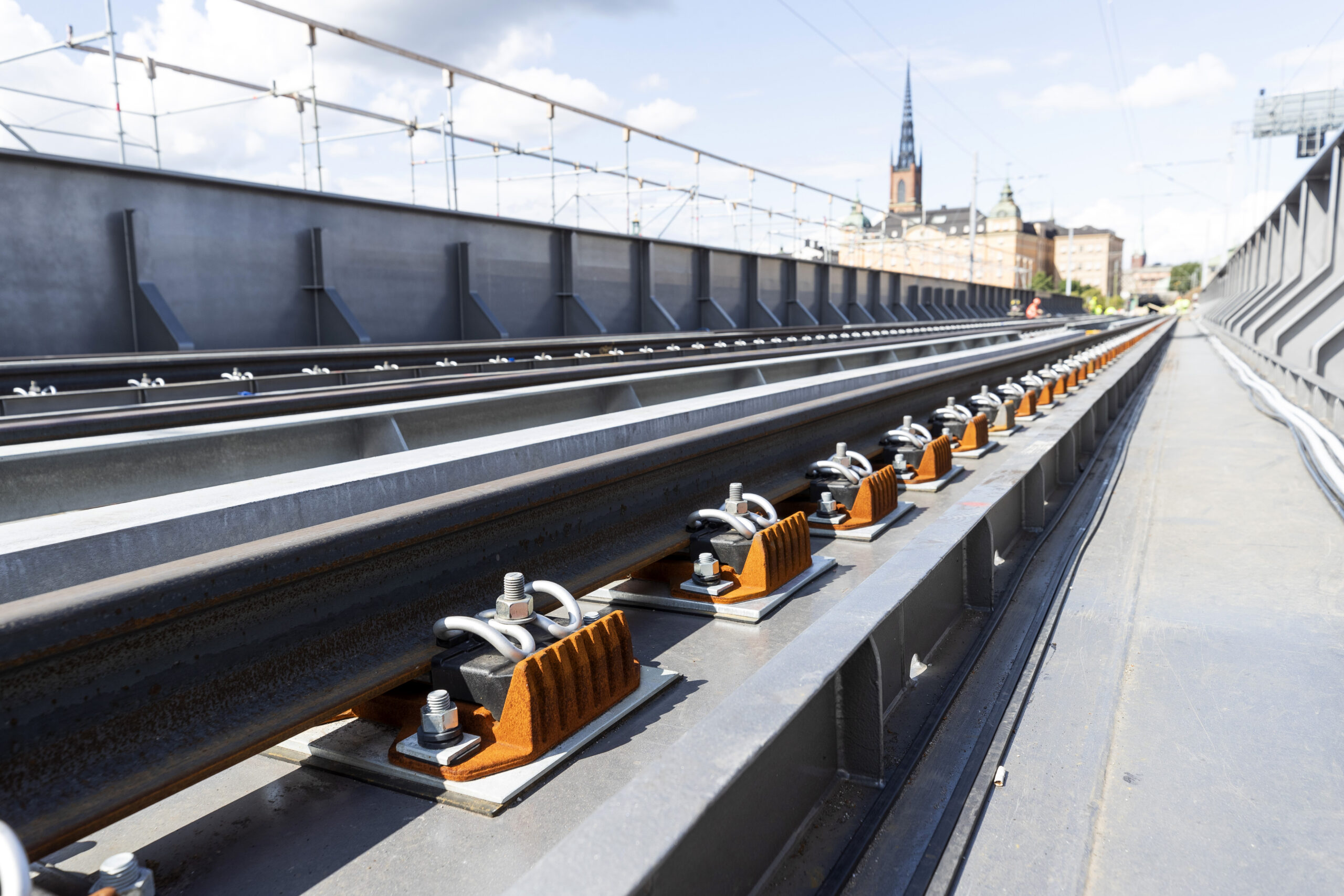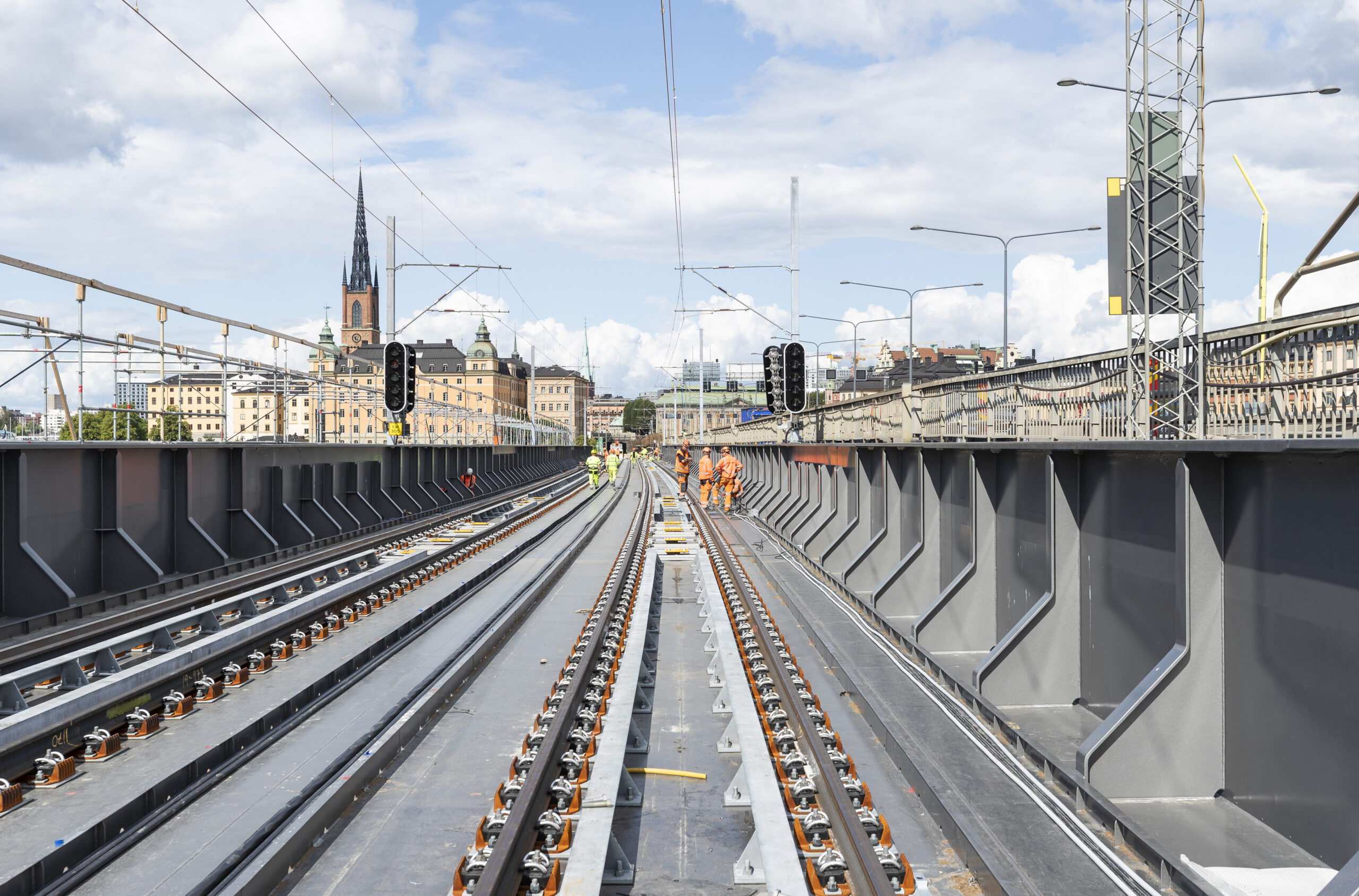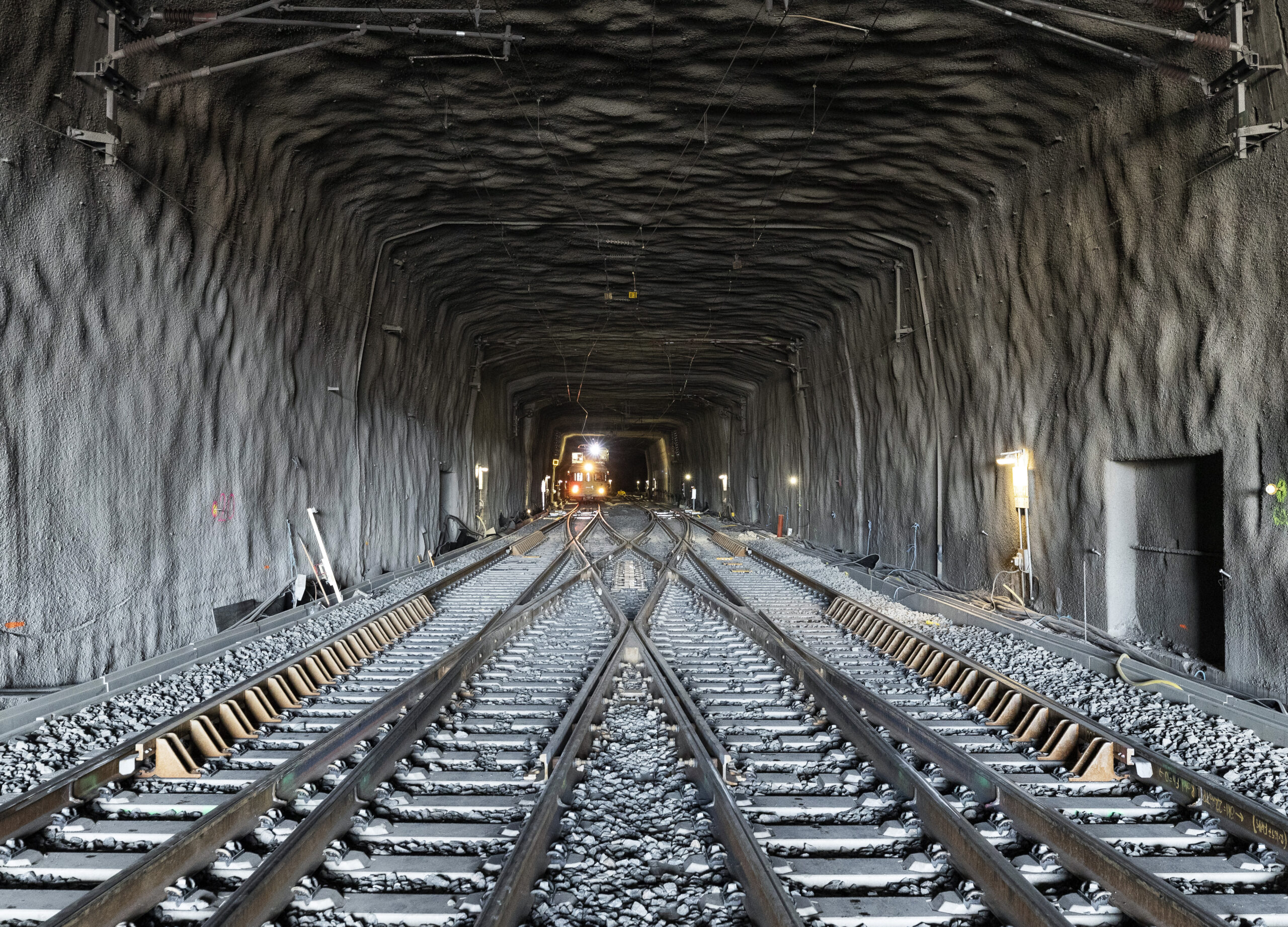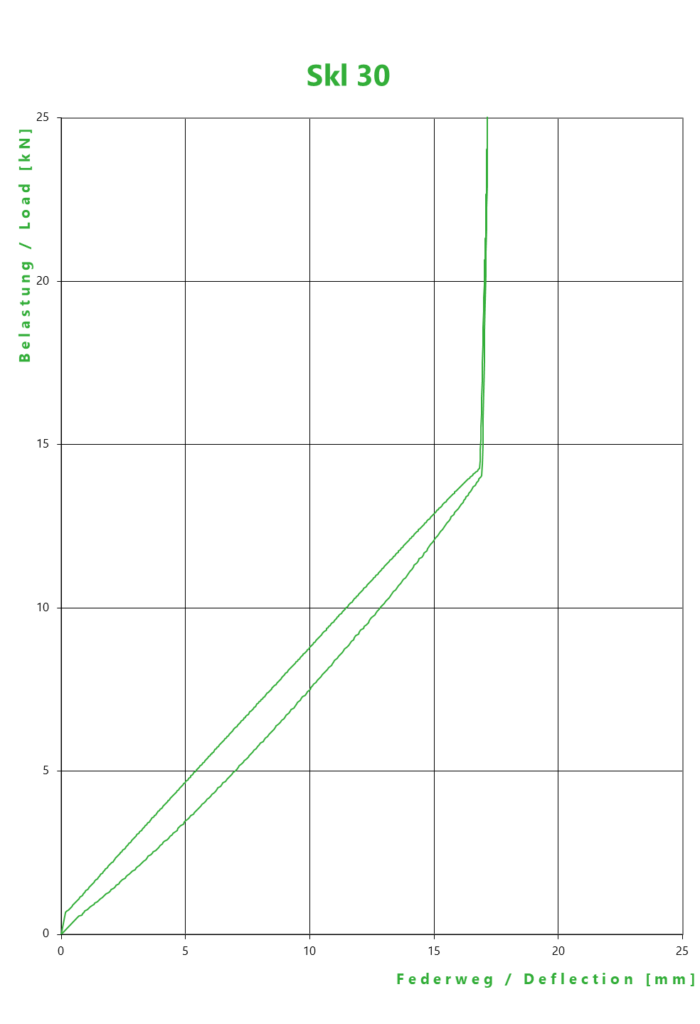Getingmidjan project, Stockholm's bottleneck
Initial situation:
The Swedish national railway is renovating the section between Stockholm’s Central Station and South (Södra) Station where 16 tracks merge into two, including track replacement. The existing double track through Stockholm was built in 1871, and its capacity had not been increased for almost 150 years.
Action plan:
To meet the tight schedule, whole bridges with signal systems, electricity and tracks were completely prefabricated – one of these with eight switch units. Following production in Vossloh’s facilities in Ystad and Örebro, the switch units were sent to a factory abroad where the bridge was prefabricated, so that they could be installed on the bridge.
Solutions for the most challenging traffic bottleneck in Sweden:
- New technology isolates the switches from bridge movement:
- Due to the abundance of switches installed on the bridges, some of them are inevitably located above a bridge joint. To disassociate the switch from the bridge sections’ movements, Vossloh has developed a new product with a two-dimensional sliding surface for placement under the switch unit, which will allow movements in both transverse and longitudinal directions.
- To cope with a tolerance in the lateral direction of a whole decimetre, the fastening system DFF 300 is used – well established for its lateral and vertical adjustment features.
- Highly elastic fastening systems for the transition zones with slab and ballasted track layouts:
- Fastening systems DFF 21 and 336 of varying elasticities are used on the Norrström and Söderström bridges. Each of a total of 15 transition zones had to be individually designed.
- Without perfectly mastered and monitored track elasticity, the bridge might be a source of noise and vibrations, which would not be tolerated in Stockholm’s historic city centre.
